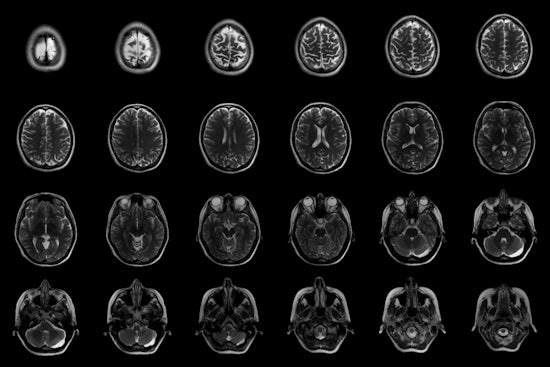A scan may indicate your risk of dementia five to 10 years before symptoms develop
A new study published in Alzheimer’s & Dementia: The Journal of the Alzheimer’s Association, detailed the link between ‘cortical grey matter’ and the risk of dementia, becoming apparent five to 10 years before the onset of symptoms.

Key points:
- Grey matter is an essential type of tissue in the human brain and spinal cord
- Grey matter is known to increase in volume, from birth, until around the age of eight years old
- After this, the density of grey matter increases until about the age of 20 and researchers have revealed that reduced thickness of cortical grey matter in the brain may serve as a reliable indicator of dementia risk
A new study published in Alzheimer’s & Dementia: The Journal of the Alzheimer’s Association, detailed the link between ‘cortical grey matter’ and the risk of dementia, becoming apparent five to 10 years before the onset of symptoms.
Researchers discovered that a ribbon of brain tissue called ‘cortical grey matter’ grows thinner in people who go on to develop dementia through the use of magnetic resonance imaging scans.
The research focused on 1,000 participants from the Framingham Heart Study in Massachusetts and an additional 500 individuals from a diverse California cohort. The average age of participants in both cohorts ranged from 70 to 74 years during the MRI studies.
The team, from the University of Texas Health Science Center at San Antonio, in collaboration with researchers from the University of California, Davis and Boston University, have identified a potential indicator for dementia.
Lead author Claudia Satizabal, PhD, from UT Health San Antonio’s Glenn Biggs Institute for Alzheimer’s and Neurodegenerative Diseases, emphasised the importance of the findings.
“If we can replicate it in additional samples, cortical grey matter thickness will be an indicator we can use to identify people at high risk of dementia,” she explained.
“Early detection provides a crucial time window for therapeutic interventions, lifestyle modifications and enhanced tracking of brain health to mitigate the progression to dementia.”
Consistent results across populations
Researchers said the importance of this study was related to its ability to be replicated across diverse populations and yield similar results.
Thicker ribbons of cortical grey matter were associated with better outcomes, while thinner ribbons correlated with a higher risk of developing dementia. This consistency across participants from different backgrounds enhanced the reliability of the results and boosted confidence in the potential indicator.
Co-author Sudha Seshadri, MD, director of the Glenn Biggs Institute at UT Health San Antonio and senior investigator with the Framingham Heart Study, said that researchers were able to compare results and identify patterns to see if they could arrive at the same conclusions.
“We went back and examined the brain MRIs done 10 years earlier and then we mixed them up to see if we could discern a pattern that reliably distinguished those who later developed dementia from those who did not,” she said.
“This kind of study is only possible when you have longitudinal follow-up over many years as we did at Framingham and as we are building in San Antonio.
“The people who had the research MRI scans while they were well and kept coming back to be studied are the selfless heroes who make such valuable discoveries, such prediction tools, possible.”
The identified indicator holds promise for clinical trial researchers aiming to minimise costs by selecting participants who are on track for developing dementia but have not yet exhibited symptoms.
This targeted approach could be particularly beneficial for investigating experimental medications in individuals at the greatest risk. Furthermore, the indicator may play a crucial role in the development and evaluation of therapeutics for dementia.
“A high proportion of people going to the neurologist get their MRI done, so this thickness value might be something that a neuroradiologist derives,” Seshadri added.
“A person’s grey matter thickness might be analysed as a percentile of the thickness of healthy people for that age.”
If further validated, this indicator could revolutionise early detection strategies, offering a valuable tool for clinicians and researchers alike to understand, prevent and treat dementia.
Future research will explore additional risk factors influencing cortical grey matter thickness, including cardiovascular risk, diet, genetics and environmental pollutants.
For information and support, please visit the National Dementia Helpline on 1800 100 500.
When was your last MRI scan? Let the team at Talking Aged Care know your thoughts on dementia prevention and subscribe to the newsletter for more information, news and industry updates.
Related content:
Hospitalisation for end-of-life care — what to expect
Older people at risk of heart disorder from antipsychotic medications























